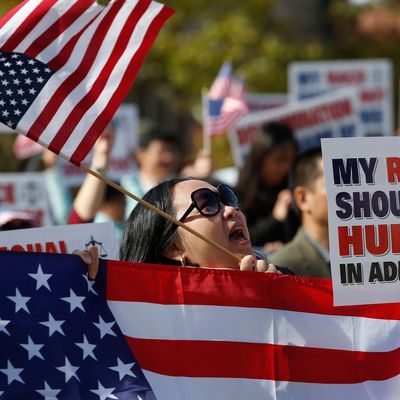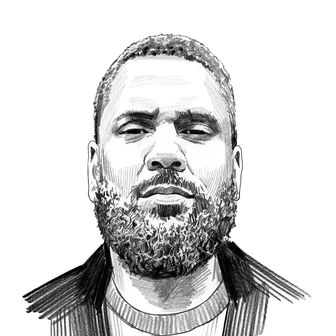
One of the more memorable quotes in Jay Caspian Kang’s sprawling look at the Harvard affirmative-action case, published in The New York Times Magazine on Wednesday, comes from a Chinese-American teenager applying to colleges. “I understand the thinking behind affirmative action, but I just wish the message wasn’t that Asians are all so privileged and rich and buying their way into colleges,” says Alex Chen, the son of working-class immigrants who has, since Kang’s interview, been admitted to Yale. “And I wish that it didn’t mean that my work didn’t count in the same way as other people’s work.” Chen’s remarks articulate a common perception: That students who benefit from affirmative action — specifically admissions criteria that consider being black or Latino, in particular, “pluses” when assessing an applicant — have an unfair advantage over students who, by virtue of their hard work, boast higher grades or more impressive extracurriculars but remain less desirable demographically. The conclusion that Chen’s work and that of other Asian-American students is somehow being devalued is not an illogical one. But at Harvard, a more accurate conclusion is that whiteness is more valuable, in many cases, than any work Chen or his fellow nonwhite applicants — Asian or otherwise — have done or could conceivably do under the present circumstances.
The broad strokes of the Harvard case are that Edward Blum, a white conservative activist, is bankrolling a legal attack on the school’s admissions criteria, alleging that Harvard discriminates against applicants of Asian ancestry. His legal team’s evidence includes the disproportionately low scores Asian-American students get on “personality” measures, which tend to nullify their academic achievements, allowing less “objectively” qualified students to take spots that should rightfully be theirs. This amounts, Blum’s team argues, to an illegal curation of incoming Harvard classes on the basis of race. It’s also a sidelong approach to an issue that has long animated the 67-year-old’s activism. In addition to the Harvard case — which Blum’s team hopes to take to the U.S. Supreme Court — he was behind the Court’s gutting of the Voting Rights Act in 2013 and Abigail Fisher’s failed challenge to the University of Texas admissions criteria in 2015. According to Kang, Blum’s stated goal is to end the use of race as a consideration at all, not just in college admissions but in any aspect of the American legal system.
That this would likely lead to the retrenchment of white advantage in both areas is coincidental, no doubt. The biggest tell is Blum’s focus on which nonwhite applicants do or don’t deserve to get into traditionally white colleges, which he pursues today in partnership with Asian-American activists whose legitimate concerns about race-conscious admissions manifest in a timeworn dynamic: people of color fighting one another over whatever resources white people leave behind. But the degree to which so much of this is predetermined remains evident in the curation unfolding at Harvard, which has little to do with advancing nonwhite students into its alumni ranks. According to the Times, 30 percent of the typical incoming freshman class is allocated for applicants who fall into one of four categories, initialized as ALDC: athletes, legacies (children of Harvard graduates), applicants on the dean’s or director’s interest lists (often children of wealthy donors and other prominent people), and children of faculty and staff.
Applicants in these categories aren’t guaranteed admission, but it helps. They’re admitted to Harvard at a rate of 45 percent, compared with 5 percent for the rest of the pool. And all four are overwhelmingly composed of white people, alleges Students for Fair Admissions, the activist group pursuing the lawsuit against Harvard and led by Blum. (Precise figures aren’t publicly available, but past reporting is suggestive. The Times notes that applicants on the dean’s or director’s interest lists are “mostly white”; the Atlantic reports that 65 percent of student athletes at Ivy League schools are white, compared with 61 percent at colleges overall; and Harvard’s admissions office declined to provide New York with a comprehensive breakdown.) With the exception of athletes, the three remaining categories share a common trait: All confer an added layer of advantage on applicants who are fortunate, privileged, or rich enough to have parents who gave Harvard lots of money, attended Harvard in the past, or work at Harvard now. That these are, by historical design, mostly white people affirms an unavoidable truth — of all the supposed race-based advantages taken into account during the college-admissions process at Harvard, whiteness may be the least discussed but the most profound.
Affirmative action was originally conceived to compensate for centuries of enslaving and otherwise tormenting, degrading, and disadvantaging black Americans by law and custom. That subsequent legal decisions — like the 1978 Supreme Court case Regents of the University of California v. Bakke, which ruled against the use of racial quotas in school admissions — have sapped its reparative impulses in favor of the more generalized pursuit of “diversity” has made it increasingly difficult, and perhaps impossible, to realize this goal. But none of that prevents an honest discussion. Affirmative action is decried publicly as a set of unearned considerations — black students getting a leg up that is denied to white applicants, who by dint of hard work and smarts are often more qualified but were unlucky enough to be white in the post-civil-rights era. The reality is that whiteness is a product of proactive investment, not a neutral cultural identifier. Black people weren’t just held back in a proverbial footrace that whites ran unencumbered; white people are ahead because whiteness was, at its inception, deliberately imbued with value that all but ensured victory.
This was as evident in the early days of the Virginia Colony — when monied landowners made it illegal for a black person to assault a white person but not vice versa — as during the New Deal era, when the single largest social-welfare investment in American history was effectively and intentionally denied to most black people. It’s why Harvard’s legacy regarding black Americans began with the slaves held captive by its early presidents and continues today with black students facing routine discrimination. It’s why the school’s legacy regarding white people began with founders, teachers, and students, and continues today with 30 percent of admission slots functionally set aside for applicants whose qualifying traits usually guarantee that they’re white. Harvard is not an aberration in its struggles with racial equity. And in fact, it has shown growth: The share of black admits in particular has increased steadily over the past decade. High-profile instances of racism among admits have been handled decisively, with some even leading to offers of admission getting rescinded. All told, many at Harvard have made sincere efforts to realize the parity affirmative action once promised. But if Kang’s report teaches us anything, it’s that nonwhite students of all backgrounds are getting the short end of a stick whose length has always been determined by the whims and standards of white Americans. That privilege was taken by force, not earned. And at its core, the Harvard case is far less about the value deficit attached to Asian labor than the continued value invested in whiteness.






























